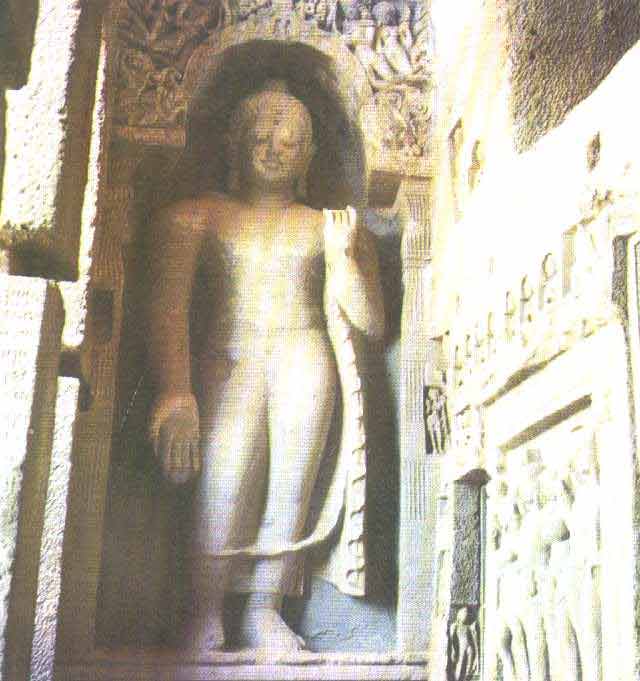
WEB PAGE OF
C.K.MOHAMED TELLICHERRY
 | WEB PAGE OF C.K.MOHAMED TELLICHERRY |

The Andhra Kings who ruled from the 3rd century B.C. to the 3rd century A.D.were Buddhists,and at times their authority extended right accross the peninsula.
Below is the carving inside the Buddhist temple of Chaitya,
dating back to the 1st century B.C., in the Kanheri caves.

State of south-eastern India; area 106,000 sq. miles. The state was created in 1953 out of the Telugu speaking area of the former Presidency of Madras, to which were added in 1956 the Telugu-speaking areas of the former state of Hyderabad. Telugu is spoken by more people than any other Dravidian language, except Tamil. The state took its name from the powerful Andhra kingdom which ruled much of the Deccan from the 3rd century B.C. to the 3rd century A.D. The adjacent state are Orissa, Madhya Pradesh, Maharastra, Karnataka, and Madras.
Andhra Pradesh occupies the eastern slope of the Deccan plateau and the adjacent lowlands along 600 mile of the coast of the Bay of Bengal. The eastern margin of the plateau, known as the Eastern Ghats, is higher and more rugged than the interior; there the rivers flow in broad shallow valleys through a gently undulating countryside before entering narrower gorge-like valleys on their way through the Ghats. The two larger rivers, Krishna and Godavari, have formed large contiguous deltas. The soil of the interior is generally thin and stony and the only extensive area of deep fertile soil are in the deltas.
Only in the north-east, including the Godavari delta, is there more than 40 inches of rain a year. Over the whole of the interior the rainfall is insufficient for rice and the chief grain crop is millet. Groundnuts are grown as a cash crop in the northern part of the interior. Because of the low rainfall large areas have to be left fallow each year to conserve moisture. Many small patches of land are irrigated with dams across small valleys which thus become a string of ponds or 'tanks'. To provide water for larger areas tow vast dams have been built. The one on the upper Tungabhadra river in Mysor contributes water to Andhra Pradesh. The other dam at nagarjunasaga on the Krishna river just west of the Ghats, waters an even larger area.
Along the coast the chief crop is rice, which is much more productive than millet. In the northern apart of the coastal plain it can be grown without irrigation, and in the deltas of the Godavari and Krishna ample water can be provided comparatively easily from the distributary rivers.
Coals are mined near Karimnagar, although the quality is mediocre. Most of the population is engaged in agriculture. In, and near, the Krishna-Godavari deltas there are several towns - Eluru, Guntur, Kakinada, Rajahmundry, and Vijayawada. Other towns of similar size are Nellore, on the southern coast, and Kurnool and Warangal in the interior. Vizagapatnam on the northern part of the coast is a port, has an oil refinery, and has a large shipbuilding yards. By the far the largest town in the State is Hyderabad, it is a centre of traditional craft industries based on textiles, leather, and timber, and also of some modern engineering industries.
